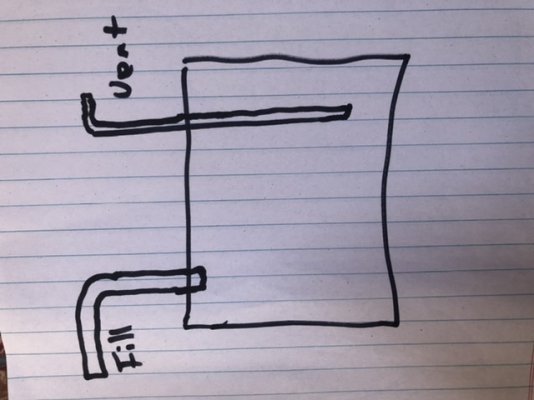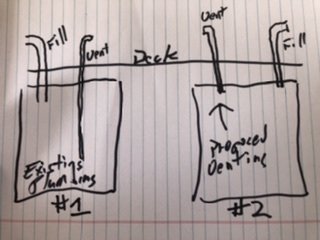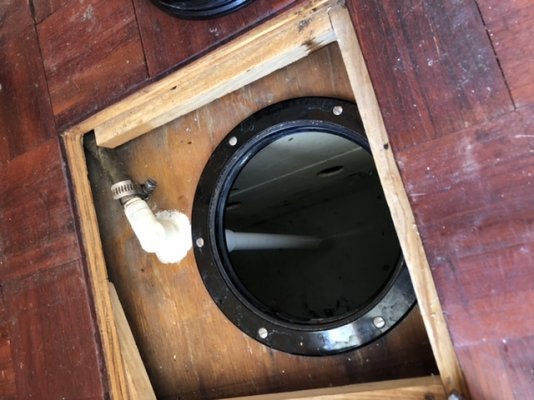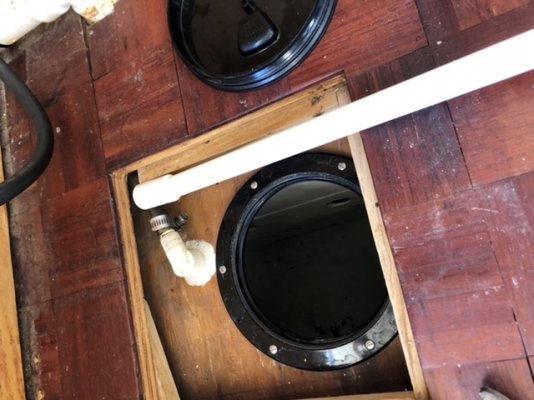BonesD
Senior Member
I have two water tanks that have separate fill ports and vent lines
The starboard tank vent line is clogged and I have to remove it to get it clean or replaced.
This clog I believe causes this tank to continuously burp water back up the fill line requiring constant monitoring to get the tank full.
The port side vent is operational but when filling this tank the water eventually blows back past the water hose indicating it is full.
Both vent lines terminate about 2/3’s of the way down in the water column.
I don’t understand this. Why aren’t they just open into the top of the tank?
Seems like when filling that water would blow out the vents when full and any extra pressure would be released out the fill port. There must be a reason for this design but I don’t know what it is. I guess maybe a bit of water sloshing out through the vent in rough seas when the tank is full?
I have included a very simple drawing of the present tank system.
Thanks
The starboard tank vent line is clogged and I have to remove it to get it clean or replaced.
This clog I believe causes this tank to continuously burp water back up the fill line requiring constant monitoring to get the tank full.
The port side vent is operational but when filling this tank the water eventually blows back past the water hose indicating it is full.
Both vent lines terminate about 2/3’s of the way down in the water column.
I don’t understand this. Why aren’t they just open into the top of the tank?
Seems like when filling that water would blow out the vents when full and any extra pressure would be released out the fill port. There must be a reason for this design but I don’t know what it is. I guess maybe a bit of water sloshing out through the vent in rough seas when the tank is full?
I have included a very simple drawing of the present tank system.
Thanks



 ). Once the water level in the tank goes up over where the vents go in, then the problems you have should start, because the vent will be under water when it needs to be in air.
). Once the water level in the tank goes up over where the vents go in, then the problems you have should start, because the vent will be under water when it needs to be in air.
